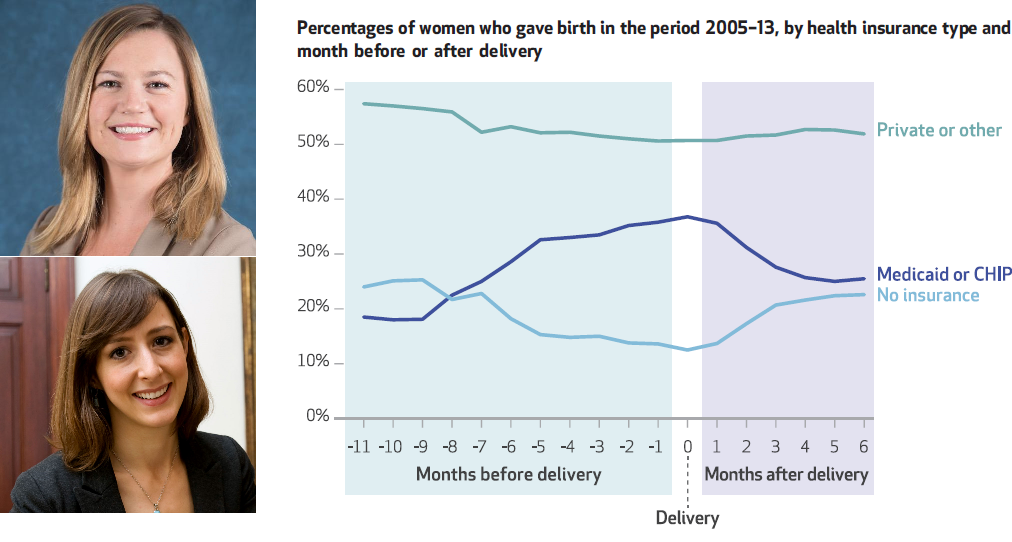 Medicaid provides health insurance coverage to many pregnant women at the time of childbirth, but gaps in coverage after delivery are common, according to a recent study published in Health Affairs. Using data from the Medical Expenditure Panel Survey between 2005 and 2013, Jamie Daw, Laura Hatfield, and their colleagues from HSPH found high rates of insurances transitions (a.k.a. “churn”) before and after childbirth.
Medicaid provides health insurance coverage to many pregnant women at the time of childbirth, but gaps in coverage after delivery are common, according to a recent study published in Health Affairs. Using data from the Medical Expenditure Panel Survey between 2005 and 2013, Jamie Daw, Laura Hatfield, and their colleagues from HSPH found high rates of insurances transitions (a.k.a. “churn”) before and after childbirth.
Ten months before delivery, a quarter of women were uninsured, but this dropped to 13% by the time of delivery, largely due to increases in Medicaid and CHIP coverage. However, among women who were covered by Medicaid or CHIP at delivery, more than half experienced coverage gaps in the six months following delivery.
Lapses in coverage were more common among women who speak a language other than English at home, are unmarried, live in the South, and have a family income of 100–185 percent of the poverty level.
Pregnancy-related Medicaid coverage only extends for 60 days after childbirth, at which time, women must re-qualify as parents or adults to remain on Medicaid. This leaves many women without an affordable source of coverage after childbirth, especially in the states that did not expand Medicaid under the Affordable Care Act. The researchers found that rates of uninsurance essentially returned to baseline by 6 months after childbirth.
"This work paints a picture of pregnancy-related Medicaid as a temporary source of coverage that fails to address the ongoing pre- and post-partum health care needs of women," Hatfield said. Obtaining coverage earlier in pregnancy could improve access to prenatal care, while continued coverage after delivery enables care for post-partum depression and other health needs following childbirth. "To address high uninsured rates after childbirth, we need policies that help women transition from pregnancy-related Medicaid to other sources of coverage," said Hatfield.
Enjoy content like this? Sign up for our newsletter and follow HCP on Twitter.